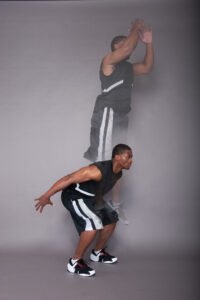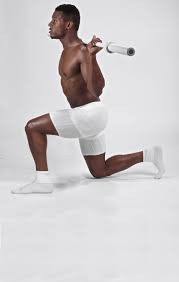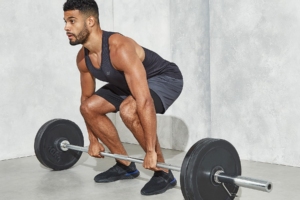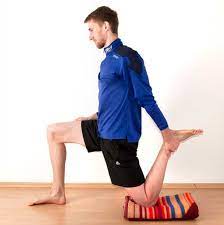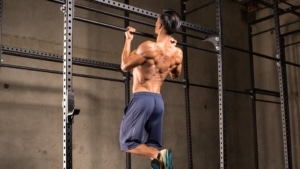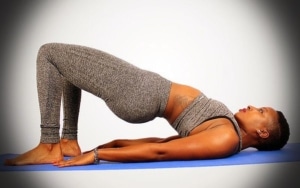The Top 5 Exercises You Must Do To Jump Higher And Stay Healthy
One of the questions most often asked by younger, growing players is, “How can I increase my vertical?” I’ll be honest, the only people who Improve their verticals are the ones who spend time jumping and training to strengthen the muscles in their legs.
The delicate balance between training to increase performance and training to prevent injury is a problem that has plagued athletes for decades. Should we just focus on getting stronger and hope that we stay healthy? Maybe it’s better to focus on exercises that keep us healthy and hope that they will make us jump higher.
As you can see, this is the hardest decision that athletes have to make when it comes to training. They’ve consulted with a trainer or physical therapist and have been told that “X muscle isn’t firing”, “Y muscle is the reason your left side hurts” and “You need to develop this muscle”.
This can leave athletes as frustrated as they were before the consultation.
While this will not serve as a guide to help you balance your training out, it will be something more. These ten exercises provide the athlete seeking a dangerous vertical jump the best of both worlds.
Jumping straight up requires an explosion in your hips, quads, hamstrings, and calves. And surprisingly, studies suggest that 10 percent of your overall vertical is in your arm swing.
What you need to do to Increase your vertical is not only strengthen the muscles that help you jump, you need to train them to explode when you want. This will catapult you to greater heights and get you closer to the rim.
There are several different ways you can improve your vertical, but none of them have to do with special shoes, overnight programs, or springs.
All of it has to do with training your body to jump higher. There is no substitute for working and training to get your body to do what you want it to do – and that jumps higher.
Each exercise has a strength and movement implication that will increase performance and correct some of the limitations previously described. You can Improve your vertical by giving your muscles the capacity to deliver more explosion and therefore more height. You need to train your muscles to deliver that explosion by doing low impact, but quick strength exercises.
Exercises To Increase Your Vertical Jump
Front Grip Reverse Lunge
Why it improves performance: During the “Jump” phase, your upper body needs to maintain a perfect neutral posture, with no forward or backward lean. This not only reinforces correct upper body posture but does so while you are required to explode off of one leg, very much like you are required to do at times throughout the game.
Why it improves health: This movement integrates both Glute and Vastus Medialis (VMO) activity. The VMO is a muscle on the inside of your knee that is the first to deteriorate with any sign of knee pain.
You are also required to stabilize in a single-leg position and display proper core function to keep your upper body rigid.
Conventional Deadlift
Why it improves performance: The deadlift is an exercise that has stood the test of time and has multiple benefits. This exercise overloads the posterior chain, which is the engine of the vertical jump. It also can be used to teach explosive triple extension of the hips, knees, and glutes.
Why it improves health: Proper execution of this movement forces the glutes to fire correctly, which is necessary for back pain prevention. When you observe the upper body, you see that your shoulder blade retractors need to display sufficient strength.
Improving shoulder blade health is essential to improving your ability to “reach” the goal.
Psoas Stretch
Why it improves performance: As I noted earlier, the restriction from psoas tightness is the inability to properly extend your legs and upper body. By actively stretching this muscle, you increase the ability of your glutes to fire when you need them to.
Why it improves health: The psoas have attachments to your lumbar spine. As this muscle tightens, it pulls your spine forward. This causes compensation patterns on joints above and under your lumbar spine but also puts increased strain on your lumbar discs and intrinsic joints.
Chin-ups
Why it improves performance: Another classic exercise that still benefits athletes, chin-ups provide a multi-joint, multiple-muscle challenge as well as a maximum effort alternative for those who may not be able to perform chest pressing exercises because of injury.
Lack of upper back strength is a direct link to lack of bench press strength. This is often overlooked, but my clients who undertook a chin-up improvement cycle all significantly increased their bench press numbers.
Why it improves health: Underdeveloped upper back musculature is related to shoulder pain and injury. While you need to include more rowing exercises as well, improving chin-up performance will balance out your shoulder blade to elevation to depression ratio.
The majority of individuals with shoulder problems present with elevated shoulder blades. This also limits your ability to reach the goal.
Glute Bridges
Why it improves performance: Your ability to recruit your glutes sets off a chain reaction down the rest of your lower body that either helps or hinders your efforts at a high leap. Weakness in your glutes will impede your ability to display force during the “pre-jump” phase of your leap. It will give your leap a glass ceiling.
Why it improves health: Due to its ability to exert a downward pull on your pelvis, it needs to be strengthened to maintain proper hip balance. Your glutes also protect your lower back during walking and when lifting heavy objects. The more you activate your glutes, the less you activate your lower back.
Putting it all together
We can see that to get the biggest improvement in our vertical leap, we have to focus on both movement and strength work. These exercises not only build the strength to leap higher but they also ensure we are healthy enough to take full advantage of our new hops.
Reaching greater heights with your vertical is an elusive goal that will come in time with a commitment to training and strengthening the muscles in your legs.
Just like all of the other aspects of basketball, whether it is dribbling, shooting, or passing, you need to practice jumping as well if you want to become better.
You can find all sorts of training programs specific to increasing your vertical either on the Internet or in the library. Try asking your physical education teacher or your coach. They may have a few tips for you as well.
Happy jumping!

